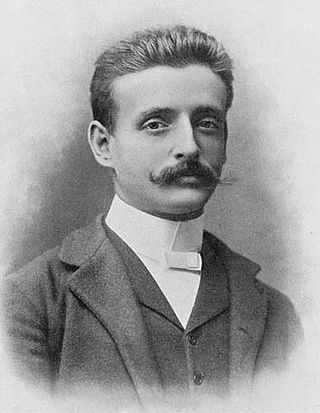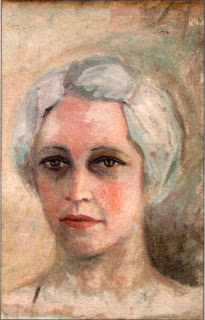Academic career
Between 1971 and 1989, Escobar was a university professor in the fields of philosophy of law, mathematical logic, philosophical anthropology, history of art and art criticism. [4]
Until 1980, he was an art reviewer for the Museo Paraguayo de Arte Contemporáneo. In 1979 he founded the Museo del Barro (museum of pottery) in Asunción, with the objective to preserve Paraguayan culture. The same year he also founded the Museo de Arte Indígena, Centro de Artes Visuales (museum for indigenous art, center of visual art). To this museum, of which he was also the director until 2008, he donated his own art collection. [1] [3] [4] [5]
Arts and activism
Between 1978 and 1988, Escobar was the curator for Paraguay at the Biennale of São Paulo. Furthermore, he was curator for several versions of the Venice Biennale and the biennales of Cuenca, Trujillo, San Juan, Buenos Aires, Lima and Porto Alegre, and for a number of expositions in Latin America and Europe. At the beginning of the 1990s, he joined two movements for Indigenous peoples' rights: the Asociación Indigenista del Paraguay and the Asociación Apoyo a las Comunidades Indígenas del Paraguay (ACIP). [2]
From 1991 to 1996 he was Director of Culture of the city of Asunción. [1] In 1996 he won a national contest to edit a bill on culture, which was later adopted by parliament as Ley Escobar 3051/06. From 2008 to 2013 he was the Minister of Culture of the government of Fernando Lugo. [1] [2] [3] [6] [7]
He was a chairman of the Paraguayan section of the International Association of Art Critics, and has written more than ten books. [2]

Darío Escobar is a Guatemalan artist.
Luis Camnitzer is a German-born Uruguayan artist, curator, art critic, and academic who was at the forefront of 1960s Conceptual Art. Camnitzer works primarily in sculpture, printmaking, and installation, exploring topics such as repression, institutional critique, and social justice.
Jorge Glusberg was an Argentine author, publisher, curator, professor, and conceptual artist.

Feliciano Centurión was a Paraguayan visual artist who lived most of his life in Argentina. He was known for his work in textiles that included embroidery, crochet, knitting and blanket-making.

Félix Toranzos is a Paraguayan artist, architect and graphic designer, considered to be one of the most conspicuous representatives of the new generation of artists in Paraguay.
Ignacio Núñez Soler was a distinguished plastic artist. His work show high amount of social commitment, because he represents in it people from his hometown (Asunción) in scenes of day-to-day life, in squares and markets.

Guido Boggiani (1861–1902) was an Italian painter, draftsman, photographer, and ethnologist who in 1887 traveled through the interior of Brazil, Bolivia and Paraguay to document the lives of Indians in the region. Now hailed as a "pioneer of fieldwork" in Italian ethnology, he was ritually killed by natives in 1902.

Manuel Espinosa was an Argentinian painter.

The Chamacoco people (Ishír) are an indigenous people of Paraguay. Some also live in Brazil.
Julia Isídrez is a Paraguayan ceramist.
Juana Marta Rodas was a Paraguayan ceramist.
Carlos Eduardo Maturana Piña, better known by his artistic pseudonym Bororo, is Chilean artist born in Santiago, Chile, on November 10, 1953. Along with Samy Benmayor, Omar Gatica, Matías Pinto D'Aguiar and Ismael Frigerio among others, he formed part of Chilean art’s 80s Generation. Bororo was his childhood nickname.

Rogelio Polesello was an Argentine painter, muralist and sculptor. He was best known for making Op art known in Latin America. He won two Konex Awards; one in 1982 and another in 2012. He was born in Buenos Aires.
Mabel Arcondo (1940–1976) was a Paraguayan artist whose work is classified in the art history of Paraguay as being at the intersection between primitivism and surrealism. Her work was characterized by intense color and dream themes.
Museo del Barro is a museum located on the outskirts of Asunción, the capital of Paraguay. It began as a private circulating collection and seven years later acquired a permanent location. It includes three separate divisions, a pottery museum, an indigenous art museum and a contemporary art collection.

Juan Nicolás Melé was an Argentine sculptor, painter, and art critic. Melé was a member of the Asociación Arte Concreto-Invención as well as co-founder of the Grupo Arte Nuevo.
Carlos María "Rhod" Rothfuss was a Uruguayan-Argentine artist who specialized in painting and sculpture. He was considered a key theoretician for the development of the concrete art movement in Argentina in the 1940s and was a founding member of the international Latin American abstract art movement, Grupo Madí.

Ofelia Echagüe Vera (1904–1987) was a painter and educator from Asunción, Paraguay. She is credited as a founder of modern art in Paraguay, through her work in the plastic arts, and through her influence upon her students, particularly Olga Blinder, Pedro Di Lascio, and Aldo Del Pino, who became the vanguard of the new movement. The work of Ofelia Echagüe Vera marked the beginning of a new period that changed the role of women in Paraguayan plastic arts.

Eugenia Belín Sarmiento was an Argentinean painter and author. Her works were featured in various international shows, among them the first Exposición Anual de Pintura, Dibujo y Escultura for artists of South America in 1893. Critical response to her works has often focused attention on her portraits of her grandfather, Domingo Faustino Sarmiento, who was president of Argentina from 1868 to 1874. Eugenia completed many other works as well, including miniatures as well as full size portraits, paintings of flowers, birds, and still lives, and sculptures.
Margarita Morselli is an artist who is considered a pioneer in the use of a video as a form of artistic expression in Paraguay. The work she presented was on abstraction with references to real spaces.










